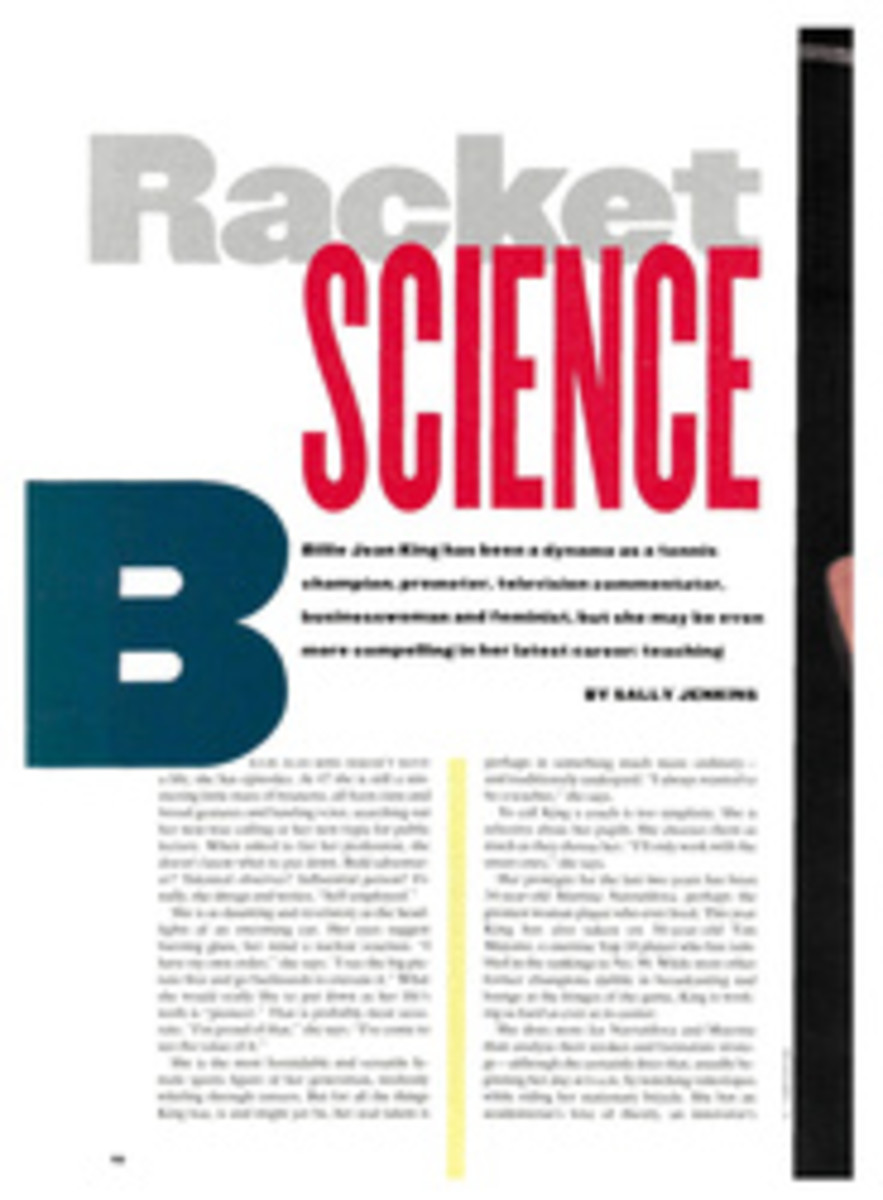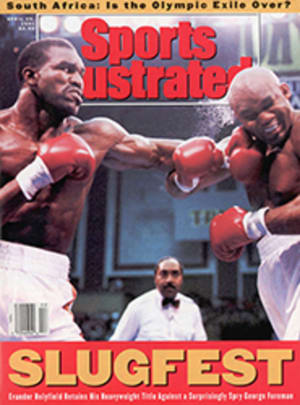
Sales Pitch
On the cool, gray morning of April 18, limousines rolled past old decrepit Comiskey Park, crossed 35th Street, traveling up Bill Veeck Drive, and stopped in front of spectacular new Comiskey Park. This was an important day in Chicago, a city that had not seen a sports facility open in over 60 years. This was an even bigger day for the White Sox, who have grown so much they had to build a bigger, better house.
Donn Pall, a self-proclaimed "South Side guy," a devout White Sox fan for 25 years and now a White Sox relief pitcher, watched the 44,000-seat, $135 million ballpark fill up on its grand opening day. "I don't like to see the limos pull up out front," Pall said. "I hope coming here doesn't become trendy, the way it's trendy to be seen at Wrigley. I don't want that."
He's worried about the White Sox becoming too popular? The White Sox? The team that was minutes from moving to St. Petersburg just three years ago? The team best known for the worst scandal in baseball history (the 1919 Black Sox)? The team that was so bad for so long and yet, unlike the neighboring Cubs, has never been lovable in losing?
Despite Pall's concerns, the South Side White Sox may never wrest control of the city from the northside Cubbies, who have the ivied charms of Wrigley, the lure of day baseball and Harry Caray. But the Sox are gaining on their rivals. Consider:
•In the April 18 editions of the Chicago Tribune, the Cubs, who are owned by the Chicago Tribune Company, didn't make page one of the sports section even though they had won five straight games and were in first place.
•National sales of Sox merchandise finished 18th out of 26 teams last year. This season Sox merchandise is red-hot. "I was in a sporting goods store in Tucson recently," says White Sox owner Jerry Reinsdorf, "and I saw our new caps. The guy said they sold them so fast they couldn't keep them in stock. In Tucson."
•This year and for each of the next three years, 50 White Sox games will be televised on Chicago superstation WGN, which carries Cub games.
•Sox reliever Bobby Thigpen actually saw fans wearing Sox caps at Wrigley Field. "Three years ago," says Thigpen, "that never would have happened."
The White Sox are building a following because they are developing players in their organization, a sharp departure from the rent-a-player days of the 1970s under Bill Veeck, the owner at the time. The club's last four No. 1 draft choices-pitcher Jack McDowell, third baseman Robin Ventura, first baseman Frank Thomas and pitcher Alex Fernandez—all have become key players. Until now, Sox fans have had precious few opportunities to watch homegrown talents like Thomas blossom into stars.
But the aforementioned quartet isn't the only reason to watch the Sox. Catcher Carlton Fisk is a walking first-ballot Hall of Famer. Tim (Call Me Rock) Raines, their new leftfielder/DH, could join Fisk in Cooperstown if he has a few more outstanding years. Thigpen set the single-season record for saves (57) last year. Shortstop Ozzie Guillen is the American League's answer to Ozzie Smith.
The clubhouse is loaded with characters. McDowell is a singer with V.I.E.W, an alternative rock band that released its first album, Extendagenda, in the off-season. The band's drummer is pitcher Wayne Edwards, whose father played drums in the '60s for the Hondells. Reliever Scott Radinsky plays drums in a California band called Scared Straight.
Reliever Ken Patterson can't sing, but he can act. He's a one-fourth investor in the yet-to-be-released movie Steele's Law and has a bit part. "I played a millionaire who put a hit on the ambassador of Iraq," says Patterson. "I had eleven lines."
With Rock, rock stars, movie stars and a shiny new stadium, the White Sox are a marketing man's dream. That man is Rob Gallas, the team's senior vice-president of marketing and broadcasting. When Gallas joined the club in September 1989, the Sox were coming off a last-place season in which they had drawn slightly more than one million fans. In 1990 the Sox went 94-68 to finish second, and attendance exceeded two million. Gallas resists taking credit. "Ninety-four wins have made me look like a genius," he says. But he did introduce celebrity promotional commercials that included, among others, Michael Jordan and Bozo the Clown.
Now Gallas has a new celeb to work with: Bo Jackson. The Sox signed Jackson in hopes that his hip injury will heal and allow him to play at least by next season. In the meantime, Gallas has kept Bo busy filming a commercial that will air starting in May. At the beginning of the ad, the viewer hears Bo say, "If you build it, he will come." The camera cuts to Jackson, who is dressed in a White Sox uniform, minus socks and shoes. "Shoeless Bo Jackson," he says.
The best-selling tool a team can have—besides winning—is a new stadium. Old Comiskey, home of the Sox since 1910, was a grand old place, but let's face it—the time had come for it to go. It creaked. It smelled like stale beer. The clubhouses were the size of phone booths. The stands had more pillars than Rome.
The new Comiskey is an open-air, natural-grass stadium with touches of old and new parks. It's something of a cross between Yankee Stadium (without the monuments) and Royals Stadium (without the fountains). It has two indoor batting cages. A doctor's office. A room for a mascot, even though the Sox don't have one. Diaper-changing facilities in the men's room. A children's area where peanut butter and jelly sandwiches are sold and crayons are available.
The only complaints from fans at last Thursday's home opener were about the long lines at the bathrooms and novelty stands. However, says Reinsdorf, "there isn't a bad seat in the house." Which isn't to say the house won't see bad days. Take the 16-0 shellacking the White Sox suffered at the hands of the Tigers in the debut at Comiskey. Following an off day, the Tigers beat the White Sox again, this time 2-1 in 12 innings. Then on Sunday, the Sox rallied with two runs in the ninth inning to beat Detroit 5-4 for their first victory at the new park.
The talented young White Sox figure to raise plenty of cheers at the new Comiskey this season. And the Cubs will do the same over at Wrigley. Indeed, 1991 should mark the first time since 1972 that the two Chicago teams have winning records in the same season. That would be fine with Gallas. "Sox fans come here; Cubs fans go there," he says. "There's plenty to go around in this town.
Caray, who broadcast Chisox games from 1971 through '81, has a sweeter vision. "I'm pulling for the White Sox," he says. "Their fans are as hungry for a World Series as Cubs fans are. Wouldn't it be great for baseball if both teams played in the World Series this year?"
Holy cow.
PHOTO
BILL SMITH
Jack McDowell threw the first pitch at the new park for the increasingly fashionable Chisox.
PHOTO
JOHN IACONO
Among Comiskey's attractions is sure Hall of Famer Fisk.

